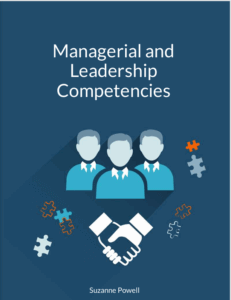Introduction
Feedback and coaching is one of the most powerful tools for growth, but done wrongly, it can backfire, demotivate, or even damage relationships.
However, if done well it can have a massively positive effect.
70% of employees who receive regular feedback feel more valued and engaged at work, compared to only 29% who do not receive any.(Gallup). So feedback and coaching is important.
Delivering effective feedback and coaching is both an art and a science. Let’s explore the best way to give feedback that empowers, and coaching that inspires, creating lasting change.
Definition of Feedback and Coaching in the Workplace
In the workplace, feedback refers to the process of providing information to employees about their performance, helping them understand how their actions align with expectations and goals.
Coaching, on the other hand, is a more developmental approach, aimed at guiding individuals through reflection and growth, allowing them to discover their own solutions to challenges.
Together, feedback and coaching form a powerful combination that fosters both immediate improvements and long-term development.
In this blog, we’ll explore the critical importance of providing effective feedback and coaching to employees.
We’ll discuss how these practices not only improve performance but also boost engagement, build trust, and enhance overall team dynamics.
By the end, you’ll gain insight into the best ways to deliver feedback and coaching that motivate and inspire employees to reach their full potential.
Feedback: Constructive Information on Performance
Feedback is the process of giving employees specific, timely information about their actions, behaviour, or performance.
The goal of is to clarify expectations, highlight areas of improvement, and reinforce positive actions.
Effective feedback is usually direct, actionable, and related to specific situations, helping employees make immediate adjustments that lead to better results.
For example, a manager might provide feedback after a project by highlighting where the employee excelled and offering suggestions for areas of growth.
Coaching: Guiding and Supporting Employee Growth
Coaching, on the other hand, is a more developmental process that goes beyond immediate performance concerns.
It focuses on helping employees enhance their skills, knowledge, and capabilities over time.
Rather than simply telling employees what to do, coaching encourages self-reflection and problem-solving.
The coach’s role is to ask guiding questions, provide encouragement, and support the employee’s journey toward achieving their personal and professional goals.
Coaching is often used to help employees unlock their potential, build confidence, and prepare for future challenges.
In short, feedback addresses current performance, while coaching fosters long-term growth. Both are crucial for creating a well-rounded and highly effective workforce.
Importance of Feedback
Understanding Strengths and Areas for Improvement
67% of employees whose managers focus on strengths during feedback are fully engaged at work, compared to only 31% whose managers focus on weaknesses (Gallup).
This shows the importance of a balanced approach. I’m not saying that weaknesses should not be discussed, only that there is a way to phrase it. More on this later.
Feedback plays a vital role in helping employees recognise both their strengths and areas where they can improve.
By providing clear, specific insights into their performance, it allows employees to see what they’re doing well and where they can grow.
This understanding is crucial for personal and professional development, as it gives individuals a roadmap for making improvements and leveraging their strengths more effectively.
Without feedback, employees may be unaware of behaviours or practices that limit their success, or they might not fully appreciate the value of their contributions.
Enhancing Performance and Engagement Through Timely Feedback
This is one of the most powerful ways to improve employee performance and boost engagement.
When delivered soon after an event, it allows employees to make immediate adjustments, leading to quicker improvements.
Constructive feedback offers actionable suggestions, ensuring that employees know exactly what steps they need to take to improve.
This clarity not only improves performance but also builds confidence and trust between managers and employees.
Moreover, when employees receive regular feedback, they feel more engaged and connected to their work.
They understand what is expected of them and how they are contributing to the team’s success.
Engaged employees are more motivated, productive, and committed, which positively impacts the overall success of the organisation.
Regular, thoughtful feedback creates a culture of continuous improvement, where employees feel supported in their growth and development.
Here’s a framework that may help
The Key Elements of Effective Feedback
Timely: Give Feedback as Close to the Event as Possible
Feedback is most effective when delivered promptly after an event or behaviour. This does not mean on the spot in front of a group of team mates, especially if the feedback is about a weakness or poor performance.
But when given soon after the performance in question, it allows the employee to make immediate connections between their actions and the feedback received.
This reduces the chance of misunderstandings or forgotten details.
Timely feedback also helps employees make adjustments quickly, leading to faster improvements and reinforcing positive behaviours.
Specific: Provide Clear, Detailed Examples
Effective feedback should be specific and focus on particular actions or behaviours.
Vague feedback like “You did a great job” or “You need to improve” leaves employees uncertain about what they did well or how they can improve.
Instead, it should include detailed examples, such as “Your presentation was well-organised, and your data analysis was clear and concise,” or “Next time, consider providing more supporting data to back up your conclusions.”
Specific feedback gives employees the clarity they need to replicate successes or work on targeted improvements.
Actionable: Offer Tangible Steps for Improvement
Feedback should always lead to actionable steps that employees can take to improve.
Without clear guidance, employees may feel uncertain about how to move forward.
Actionable feedback provides concrete suggestions or strategies for change.
For example, if an employee struggles with time management, actionable feedback could be, “Try using a project management tool to prioritise your tasks and set daily goals.”
This gives the employee clear direction and tools to improve their performance.
Balanced: Highlight Both Strengths and Areas for Growth
Balanced feedback acknowledges an employee’s strengths while also addressing areas that need improvement.
This approach ensures that feedback is constructive and motivating, rather than discouraging. Highlighting strengths helps build the employee’s confidence and reinforces what they are doing well, while discussing areas for growth provides an opportunity for learning and development.
For example, “You handled client questions with confidence, but focusing on active listening could help you better understand their concerns.”
Balanced feedback creates a more positive, growth-oriented conversation.
Objective: Focus on Behaviour and Results, Not Personal Characteristics
Effective feedback should be objective, focusing on specific behaviours and results, rather than personal traits or characteristics.
This ensures that feedback is fair and unbiased, and it helps the employee understand the impact of their actions without feeling personally criticised.
Instead of saying, “You’re disorganised,” frame the feedback around behaviour: “The report was submitted late, which delayed the project timeline. Let’s discuss ways to improve time management for future deadlines.”
Objective feedback keeps the conversation focused on performance and improvement rather than personal judgment.
92% of employees agree that constructive feedback, when delivered appropriately, can improve performance (Harvard Business Review).
By incorporating these key elements, feedback becomes a powerful tool for driving improvement, fostering growth, and building a more engaged and productive workforce.
Benefits of Coaching
Developing Employees’ Skills, Knowledge, and Confidence
Coaching plays a crucial role in developing employees’ skills, expanding their knowledge, and boosting their confidence.
Unlike feedback, which focuses on immediate performance, coaching is a forward-looking process that helps individuals grow over time.
Through coaching, employees receive personalised guidance and support as they work to refine their abilities and overcome challenges.
A good coach helps employees explore new ways of thinking and problem-solving, fostering independence and self-assurance.
This approach empowers employees to take ownership of their development, leading to stronger performance and higher confidence in their roles.
Fostering Continuous Learning and Growth Within the Organisation
One of the greatest benefits of coaching is its ability to create a culture of continuous learning and growth within an organisation.
By focusing on long-term development, coaching encourages employees to adopt a growth mindset, where they view challenges as opportunities to learn rather than obstacles to overcome.
This mindset leads to ongoing improvement, innovation, and adaptability—skills that are invaluable in today’s fast-paced business environment.
In addition, coaching helps employees develop not only the technical skills required for their jobs but also essential soft skills like communication, leadership, and emotional intelligence.
As individuals grow, the organisation as a whole benefits from their enhanced contributions, creating a more dynamic and resilient workforce.
By investing in coaching, companies build a foundation for sustained employee engagement, development, and overall success.
Demonstrating Care and Investment in Employees’ Development
When managers take the time to provide feedback and coaching, it sends a clear message to employees: their growth and success matter.
By consistently offering both, managers show that they are invested in their employees’ progress, not just in achieving immediate business results.
This demonstration of care creates a supportive work environment where employees feel valued and motivated.
Knowing that their manager is committed to their personal and professional growth fosters loyalty and engagement, as employees see the direct effort being made to help them succeed.
Building Trust and Positive Relationships
Feedback and coaching are powerful tools for building trust between managers and employees.
When delivered effectively, feedback shows transparency and honesty, while coaching reflects a manager’s willingness to invest time in nurturing talent.
Employees who receive regular feedback and coaching are more likely to view their managers as approachable, supportive, and committed to their success.
This open line of communication fosters mutual respect and trust.
In turn, this trust strengthens the relationship between manager and employee.
Employees feel safe to share challenges, ask for guidance, and take risks in their development. Managers who are seen as reliable sources of constructive feedback and growth-oriented coaching can create a culture where continuous improvement is encouraged.
Strong, trust-based relationships between managers and employees lead to higher morale, better teamwork, and greater overall productivity within the organisation.
Enhancing Communication and Collaboration
Feedback and coaching foster an environment of open communication, which is essential for effective collaboration within teams.
When feedback is a regular part of the workplace culture, employees feel more comfortable sharing their thoughts, concerns, and ideas with both their managers and peers.
This openness encourages transparency, reduces misunderstandings, and helps team members work together more effectively.
Coaching further strengthens communication by encouraging active listening and thoughtful questioning, which are crucial skills for resolving conflicts, sharing ideas, and supporting one another.
Through feedback and coaching, team members learn how to communicate constructively, share insights, and offer support without fear of judgment.
This helps create a more cohesive team, where everyone is aligned and working toward common goals, fostering a collaborative work environment where ideas flow freely, and problems are solved collectively.
Facilitating Alignment and Clarity on Goals and Expectations
Ongoing feedback and coaching sessions also play a pivotal role in ensuring alignment and clarity on team goals and expectations.
Regular feedback keeps employees informed about how their contributions align with the broader objectives of the team and the organisation.
It allows managers to work with employees on setting clear, achievable goals and developing the necessary skills to meet them.
When team members have a clear understanding of expectations and how their efforts contribute to larger goals, they are more likely to work together effectively and support each other’s progress.
By fostering continuous communication and aligning everyone on goals and expectations, feedback and coaching lead to stronger collaboration, improved teamwork, and more successful outcomes.
Empowering Employees
Feedback and coaching are essential tools for helping employees take control of their professional growth.
When employees receive constructive, actionable feedback, they can better understand their strengths and areas for improvement.
This clarity fosters self-awareness, motivating employees to set personal goals and actively pursue them.
Coaching complements this by providing the support, resources, and encouragement employees need to reach their potential, helping them feel capable and empowered rather than reliant on constant direction.
By consistently offering feedback and coaching, organisations create a culture of learning and ownership, where employees feel inspired to drive their growth.
How Effective Feedback and Coaching Empower Employees to Make Meaningful Contributions to the Organisation
Increased Innovation: When employees are coached on their problem-solving and critical-thinking skills, they feel more confident to propose new ideas and solutions.
For example, in an organisation that encourages feedback, a junior team member might feel empowered to suggest a process improvement that ultimately streamlines workflows and saves time.
Enhanced Decision-Making: Through regular coaching, employees can develop the skills to make more informed, independent decisions.
A manager who provides consistent, constructive feedback on decision-making helps team members recognise the factors to consider, increasing their confidence and competence in handling responsibilities that benefit the entire team.
Ownership of Results: Feedback focused on outcomes encourages employees to see how their individual contributions impact the larger organisational goals.
When employees understand the impact of their work they feel a sense of ownership and are more committed to achieving high standards, making them invaluable contributors.
Retaining Talent and Fostering Growth
How Providing Feedback and Coaching Contribute to Employee Retention and Talent Development
Feedback and coaching play a vital role in retaining top talent by addressing employees’ needs for growth and support.
Regular, meaningful guidance helps employees understand how their work contributes to the organisation, making them feel valued and connected to its mission.
Coaching, meanwhile, equips them with the skills and confidence to take on new challenges, which can be incredibly motivating and fulfilling.
When employees see that their organisation invests in their development, they’re more likely to stay, resulting in higher retention rates.
Effective feedback and coaching don’t just retain employees—they cultivate future leaders by fostering talent development and inspiring employees to pursue career advancement within the organisation.
How a Culture of Feedback and Coaching Supports Long-Term Growth and Success
A culture that prioritises feedback and coaching sets the stage for sustainable organisational growth.
When feedback is a norm, employees are continuously learning and adapting, making the organisation agile and resilient to change.
Coaching helps to bridge skill gaps, ensuring that the workforce is equipped to handle evolving challenges and drive innovation.
Over time, this culture of continuous improvement aligns employees’ growth with the organisation’s goals, building a strong foundation of engaged, capable team members.
Such a culture not only attracts and retains talent but also propels the organisation forward, leading to long-term success and a competitive edge.
Overcoming Challenges
One common challenge in giving feedback is the fear of causing discomfort or negative reactions, which can lead managers to avoid necessary conversations.
To address this, leaders can adopt a constructive approach, framing feedback around growth opportunities rather than focusing solely on shortcomings.
Another challenge is ensuring feedback is actionable; vague or overly general feedback can leave employees unsure of how to improve.
Providing specific examples and clear guidance helps employees know exactly where to focus.
Additionally, maintaining consistency can be difficult amidst busy schedules.
Scheduling regular check-ins and prioritising short, focused feedback sessions can make feedback an ongoing, manageable practice.
Tips for Managers and Leaders to Effectively Incorporate Feedback and Coaching into Their Leadership Approach
Set Clear Expectations: Begin by communicating the value of feedback and coaching to your team, so employees see it as a supportive process.
Clarify that comments are aimed at helping them succeed and grow within their roles.
Be Timely and Consistent: Feedback is most effective when it’s timely. Don’t wait for annual reviews—incorporate regular, short one to one sessions and coaching moments into weekly or monthly interactions to make development a continuous process.
Practice Active Listening: Engage employees in the feedback process by asking for their perspective, encouraging dialogue, and showing that their views are valued. This makes feedback a two-way exchange, strengthening trust and mutual respect.
Invest in Coaching Skills: Leaders should develop their own coaching skills by learning techniques such as open questioning, active listening, and goal-setting.
Continuous skill development as a coach helps managers empower their teams more effectively and create a culture where feedback is viewed as an opportunity, not a critique.
By embedding these strategies, leaders can overcome common challenges and create a feedback and coaching practice that enhances team morale, strengthens trust, and boosts overall performance.
Conclusion
Giving feedback and coaching at work empowers employees to take ownership of their development, boosts their confidence to make meaningful contributions, and nurtures future leaders within the organisation.
These practices improve employee retention, support talent development, and build a resilient, agile workforce ready to meet the organisation’s goals.
When this becomes routine, employees feel valued and engaged, fostering a culture of continuous improvement that benefits individuals and the organisation alike.
Organisations that prioritise feedback and coaching are better positioned to cultivate a motivated, skilled, and committed workforce.
Leaders are encouraged to implement systems that make it a regular practice and to provide managers with training to coach their teams effectively.
By embedding these values into the workplace, companies can create an environment that supports employee growth and drives long-term success.
To every manager, leader, and team member reading this, consider feedback and coaching as invaluable tools for growth.
Recognise the potential they hold to unlock new levels of individual and team performance, and embrace these practices to foster a workplace where everyone has the opportunity to thrive.
By doing so, you contribute to a positive cycle of development that benefits both people and the organisation’s mission.





